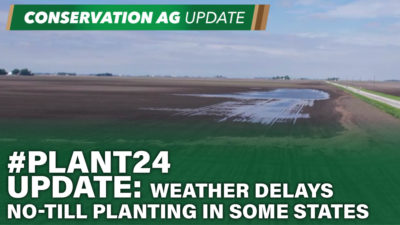Soybeans are considered to be source limited. In other words, a soybean plant has the ability to consistently make more yield than the environment allows. A soybean crop will adjust its yield potential to match the growing conditions. In a typical Ohio soybean field, it is estimated that flowers and young pods abort at a rate of 60% to 75%.
Soybean yield is ultimately determined by two yield components: the number of seeds per acre and the final seed weight. The number of pods (and seeds) produced by a soybean field is determined by the supply of simple sugars from the leaves during flowering and pod set. A highly productive environment will provide plenty of sunshine, nutrients, and water that results in a large supply of sugars to maximize the number of seeds produced per acre. Additionally, an early planting date and limited stresses from soybean flowering (R1) through seed development (R5) will extend the seed fill duration resulting in increased seed weight. In Pittsburg, Pa., soybeans planted in mid-April spent 52 days in reproductive development versus 37 days for a mid-May planting date.
Farmers historically have focused nutrient management decisions on the three primary macronutrients — nitrogen, potassium, and phosphorus. However, in the past several decades, sulfur (S) is receiving an increasing amount of attention. Reasons soybeans have become more responsive to sulfur include: a reduction in sulfur-containing acid rain by lowering industrial emissions, higher crop yields are increasing sulfur requirements, and growers targeting early planting dates when soil temperatures are cooler reduce sulfur availability due to less mineralization.
Sulfur plays many important roles within soybeans. Sulfur promotes rapid root growth, increasing the ability of the plant to take up more nutrients and water throughout the growing season. Sulfur also increases the number nitrogen producing nodules and increases the size of the nodules. Increasing nodule capacity is critical for a soybean plant to keep up with the nitrogen demands of a high yielding crop (1 bushel of soybeans requires 4 to 5 pounds of nitrogen). Nitrogen accumulation in a soybean field of Kip Cullers, former soybean world record holder, was measured at three times the rate of a typical soybean field.
Soil tests are not a good indicator of potential yield response to sulfur. Most of the sulfur in soil is present in organic matter and is not plant available. Sulfate sulfur (SO₄²⁻) is the only form of sulfur that plants can utilize. As soils warm during the growing season (to about 90 degrees F) organic matter will slowly break down, releasing 2 to 3 pounds of sulfate sulfur. Much like nitrate nitrogen, sulfate sulfur can be easily taken up by plants because it is water-soluble but can also be moved out of the root zone by leaching. As a result, sulfur must be applied annually to crops each spring in the sulfate form.
Research by Shaun Casteel, Purdue University, has demonstrated that sulfur applications in soybeans can increase soybean yields by 8 to 11 bushels per acre but responses are dependent on planting date and soil type. Trials conducted by Purdue have consistently shown sulfur fertility to increase yield in early planted soybeans (April through early-May). Yield gains were attributed to more robust nodulation, higher amount of nitrogen fixation, and improved leaf retention. Ultimately, sulfur increased number of seeds per acre and increased seed size. Sulfur applications did not impact yield of late planted soybeans.
Applying sulfur just ahead of soybean planting through early vegetative growth (V2-V3) will provide the greatest benefit. The earlier the better. An application rate of 15 to 20 pounds per acre is suggested by Casteel as a good starting point to test the response of sulfur. There are several fertilizer options to choose from. Ammonium sulfate (AMS) and pelletized gypsum are dry fertilizers options that have proven effective. Ammonium thiosulfate (ATS), potassium thiosulfate (KTS), and other liquid fertilizers can be banded with starter fertilizers or dibbled on top of the soil surface.
Not all soybean fields will be responsive to a sulfur application. The greatest chance to measure yield improvement from sulfur application in soybeans are in fields that are early planted, high yielding fields, fields with high amounts of residue or cover crops, and fields with lower organic matter. The best way to know if sulfur will pay on your farm is to split several fields this year and test it for yourself.






Post a comment
Report Abusive Comment